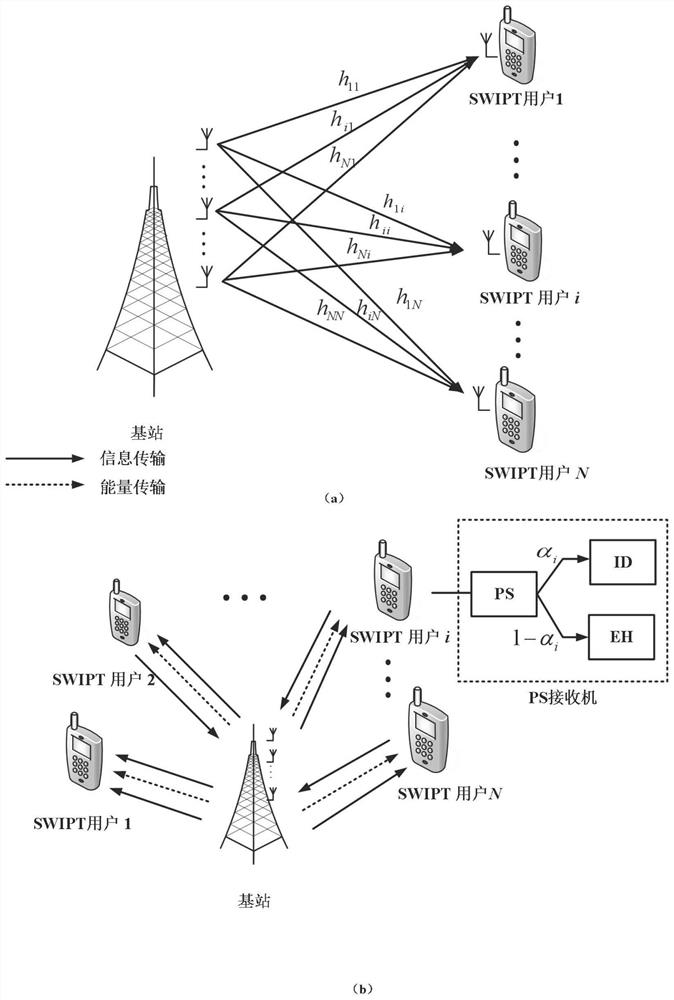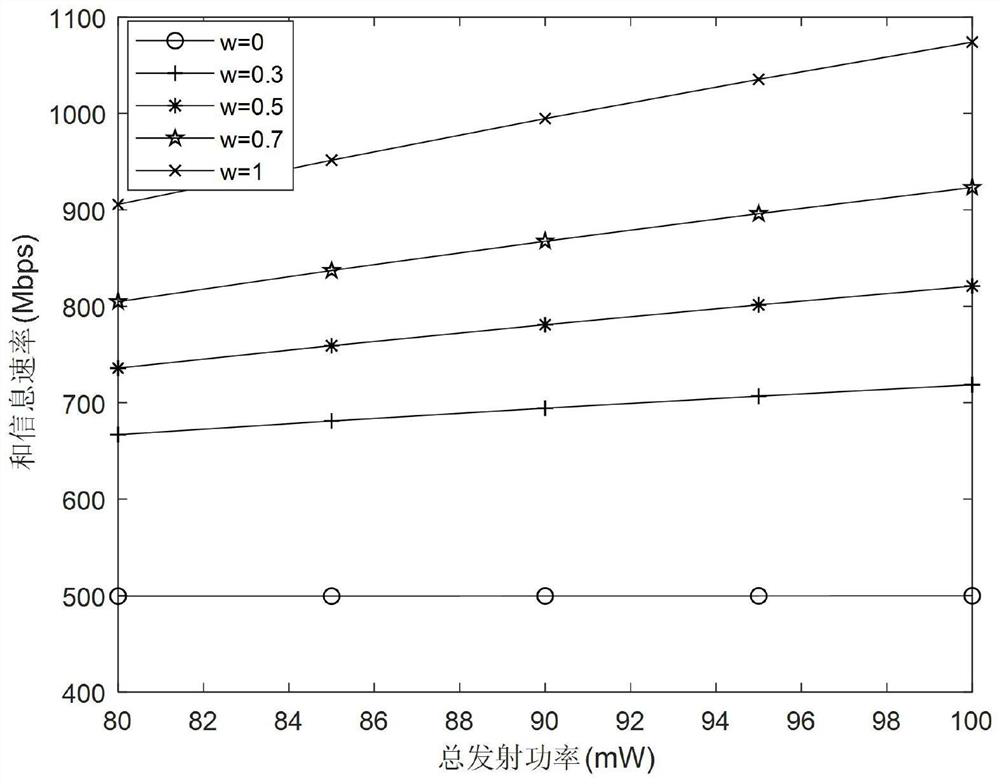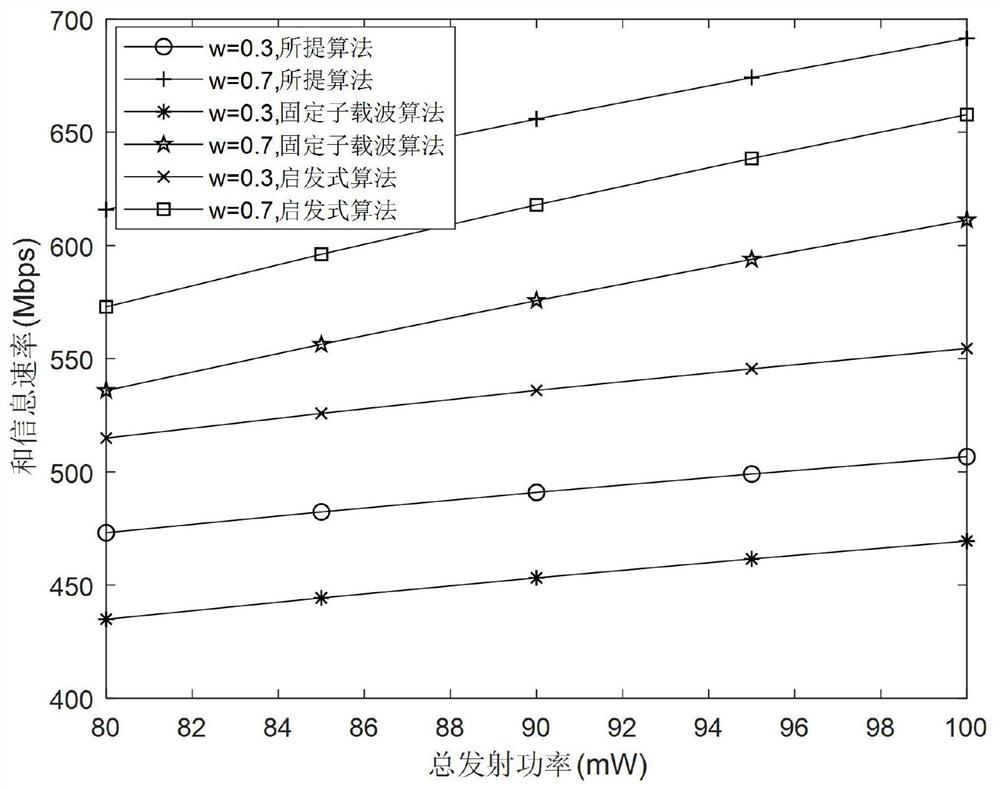GFDM-based wireless energy-carrying network uplink and downlink resource joint allocation method
A wireless energy carrying and link resource technology, applied in the field of resource joint allocation optimization algorithm
- Summary
- Abstract
- Description
- Claims
- Application Information
AI Technical Summary
Problems solved by technology
Method used
Image
Examples
Embodiment Construction
[0063] figure 1 It is the SWIPT network scenario diagram based on GFDM. The scenario consists of a base station (Base Station, BS) and multiple SWIPT users. The SWIPT user has an energy harvesting function, and the energy used for the uplink transmission signal only comes from the signal transmitted by the base station. At the same time, the base station is equipped with N antennas, while other nodes in the network have only a single antenna. It is assumed that the communication links between nodes are subject to Rayleigh fading, and each node is fully aware of all channel state information. In the downlink, each user adopts a power division based receiver structure. in, figure 1 (a) is the downlink antenna selection scheme diagram. A downlink transmission antenna selection (Transmission Antenna Selection, TAS) scheme is implemented at the BS. An optimal antenna is selected for a SWIPT user through the TAS scheme. Each antenna can only be assigned to one SWIPT user, tha...
PUM
 Login to View More
Login to View More Abstract
Description
Claims
Application Information
 Login to View More
Login to View More - R&D Engineer
- R&D Manager
- IP Professional
- Industry Leading Data Capabilities
- Powerful AI technology
- Patent DNA Extraction
Browse by: Latest US Patents, China's latest patents, Technical Efficacy Thesaurus, Application Domain, Technology Topic, Popular Technical Reports.
© 2024 PatSnap. All rights reserved.Legal|Privacy policy|Modern Slavery Act Transparency Statement|Sitemap|About US| Contact US: help@patsnap.com










